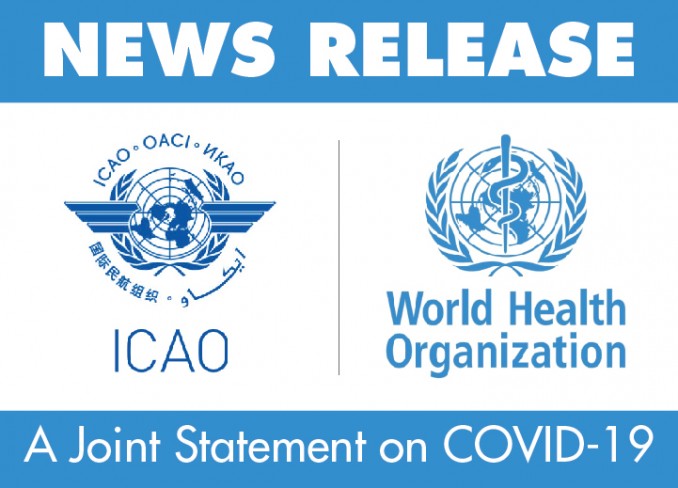
Joint Statement on COVID-19
On 31 December 2019, an outbreak of pneumonia of unknown etiology was reported in Wuhan City, Hubei province of the People's Republic of China. On 9 January 2020, Chinese authorities reported that the cause of this viral pneumonia was initially identified as a new coronavirus, which is different from any other human coronavirus discovered so far. The disease has subsequently been named as COVID-19.
Following the advice provided by the Emergency Committee convened under the International Health Regulations (IHR (2005)), on 30 January 2020, the Director-General of the World Health Organization (WHO) declared the outbreak of COVID-19 to constitute a Public Health Emergency of International Concern (PHEIC) and issued a set of Temporary Recommendations.
WHO is working closely with global experts, governments and partners to understand this new virus, to track its spread and virulence, and to provide advice to countries and the global community on measures to protect health and prevent the spread of this outbreak.
The International Civil Aviation Organization (ICAO) issued two electronic bulletins on a State letter to highlight ICAO's role in providing aviation-related information on COVID-19 and in serving as the key facilitator for States and organizations that are members of the ICAO Collaborative Arrangement for the Prevention and Management of Public Health Events in Civil Aviation (CAPSCA) programme to implement effective collaboration and coordination with all stakeholders. ICAO is also working with governments and industry partners, such as the International Air Transport Association (IATA) and Airport Council International (ACI), to provide guidance to aviation authorities, airlines and airports on appropriate measures aimed to protect the health of the travelling public and reduce the risk of transmission.
ICAO and WHO remind all stakeholders of the importance of following existing regulations and guidance, particularly the relevant standards contained within the various Annexes to the Convention on International Civil Aviation and the International Health Regulations (2005). Cross-sector collaboration at the national level is also important, and in this regard, States are reminded to coordinate between aviation and health authorities and to establish National Facilitation Committees that comprise all relevant groups, in line with ICAO guidelines.
WHO has advised countries to institute public health measures proportionate to the public health risks and consistent with the International Health Regulations (IHR (2005)). WHO has also underlined the importance of travellers' awareness in preventing the transmission of COVID-19.
Building from past experiences with communicable disease outbreaks, WHO, ICAO and aviation industry organizations have developed extensive guidelines, toolkits and response plans to support governments, passengers, and the aviation industry in mitigating risks.
Intense international cooperation and coordination, between governments and other agencies as well as between the public and private sectors, is on-going and should be strengthened as needed going forward.
(signed)
Dr. Fang Liu
Secretary General
International Civil Aviation Organization
(signed)
Dr. Tedros Adhanom Ghebreyesus
Director-General
World Health Organization
_____________
Useful links:
WHO, Outbreak of coronavirus disease (COVID-19)
WHO advice for international traffic in relation to the outbreak of the novel coronavirus
WHO, Management of ill travellers at Point of Entry - International airports, seaports and ground crossing - in the context of COVID-19 outbreak
ICAO COVID-19 Facilitation website
ICAO CAPSCA website
IATA Emergency Response Guidelines
ACI Health Priorities
OTHER REFERENCE:
IATA, Coronavirus updated impact assessment Released 05 March 2020




